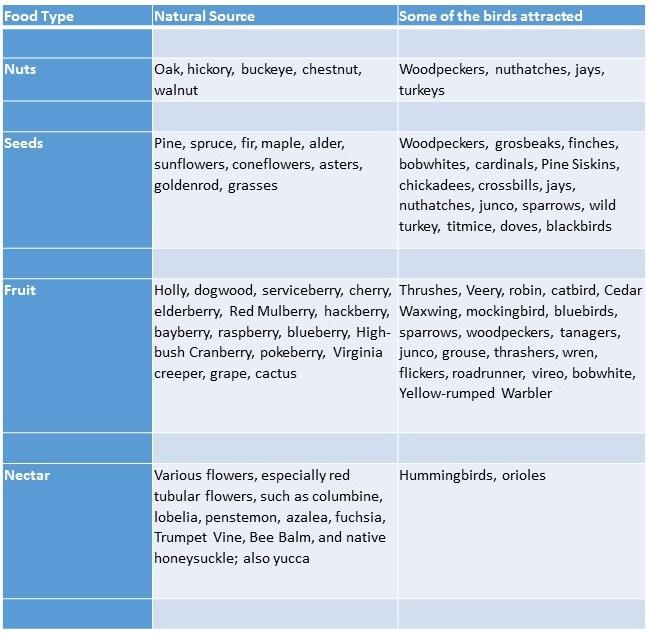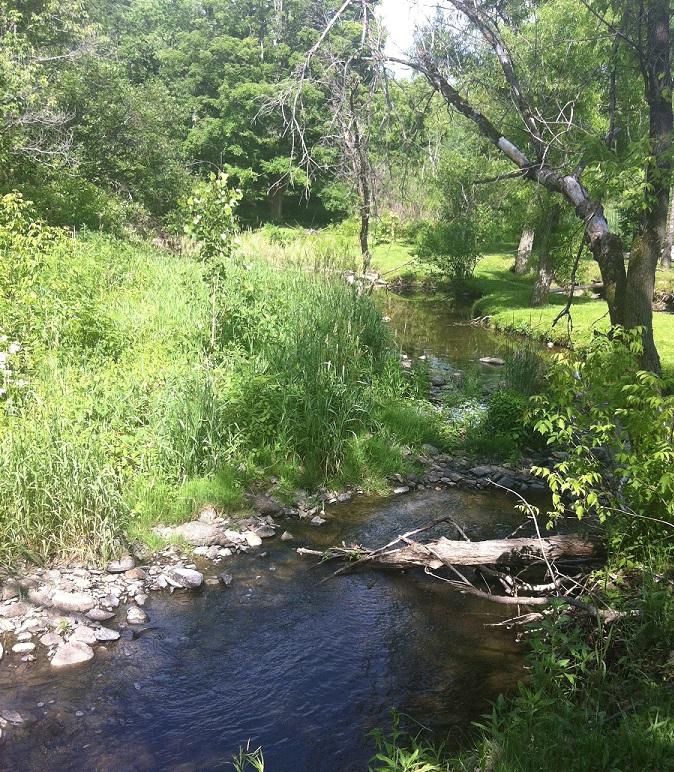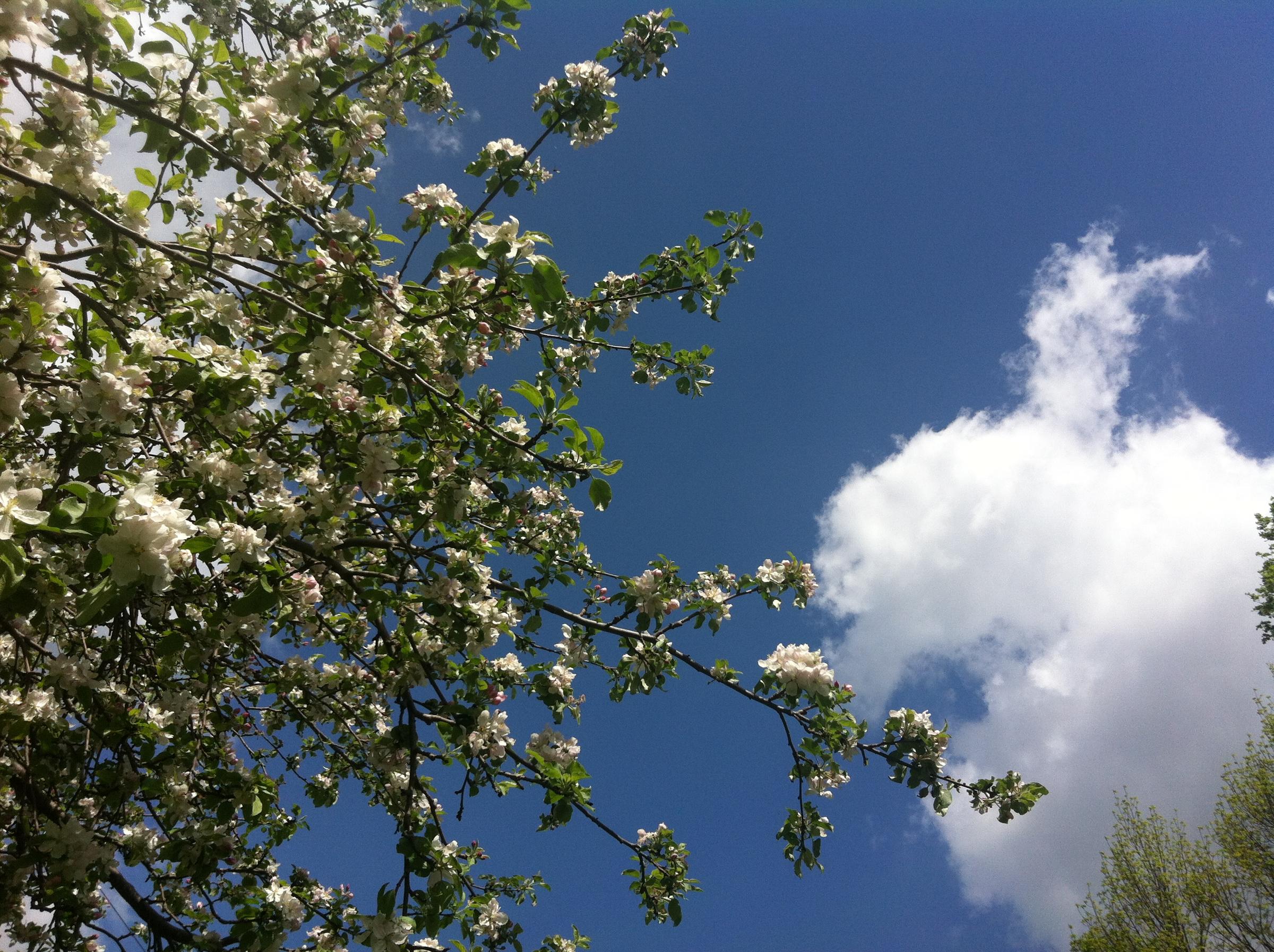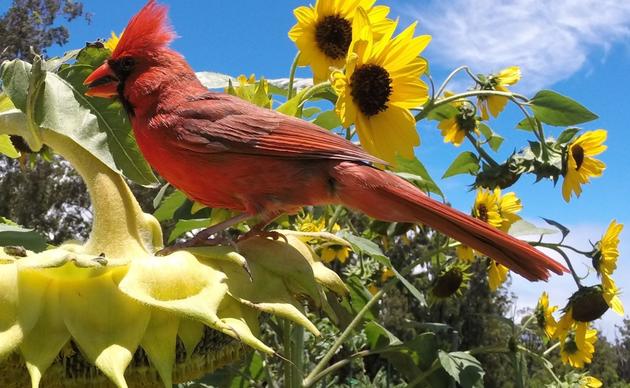The needs of birds aren’t much different than our own. Food and water are absolute basics, but so is shelter or cover to serve as protection from the weather and a safe place to raise a family. Provide these fundamental elements in your backyard habitat, and you will attract numerous visitors.
Food
Many backyard birds are insect eaters, but will supplement their diet with nuts, seeds, fruit, or nectar, depending on the species. Increase the array of foods you offer, and you will increase the diversity of birds you will attract and support.
Natural sources: Nothing beats natural, native vegetation to feed the birds of your area. So plant a variety of native plants and in a combination that supplies food year-round. Following is a list to get you started. To learn more, click on Plants for Birds and Wildlife. Also, simply the way you maintain your garden can supply additional food sources. For instance, leaves raked into your garden bed and under shrubs can provide foraging areas for ground-feeding birds such as sparrows.

Supplemental sources: Millions of people enjoy feeding birds, and feeders can help birds in especially harsh winters. A feeding station with a variety of bird feeders suited to the eating habits of different species will attract the greatest number of species. For instance, some birds feed on the ground, others like perching; some prefer sunflower seeds, others millet, thistle, suet, or nectar.
Water
All birds need water for drinking and for bathing. By providing a clean, fresh source, you will attract more species than will visit bird feeders.
Natural sources: If you have a natural water source on your property, such as a stream or wetland, enhance its attractiveness and wildlife value by protecting and restoring native plant species and allowing the vegetation along the banks to grow high to create a buffer zone.
Supplemental sources:
- Bird Baths - This is a simple, popular way to provide water, with endless designs available at garden centers and wild bird supply stores. The sides should incline gently to a depth of no more than two to three inches. The surface should be rough for better footing. To protect vulnerable bathing birds from lurking predators, locate the bath some distance from cover, about 15 feet is a good distance. Change the water every few days and keep the bath scrubbed clean. Birds are attracted to the sound of running water and a drip or misting feature will increase the number of visitors. Water heaters will keep the water free of ice during winter months in colder climates.
- Ponds & Water Gardens - The creation of these water elements will take some work but, done well, they can attract many species. Ponds for birds should be shallow, with gently sloping shorelines.

Nesting
Birds will remain in your habitat during the breeding season if they have places to nest and raise young. Different species have different requirements. Some nest in cavities, many others in open nests found on ledges or in a tree crotch, and others nest on the ground. Get to know which species are likely to nest in your area and provide the appropriate habitat or structure.
Natural sources: Native trees and shrubs provide good nesting areas for many species, from those that nest in holes to those that create cup-shaped nests in the crotches of branches to those that build nests at the tops of the canopy. Include a mix of evergreen and deciduous plants, a hedgerow, and vines. For grassland species such as meadowlarks, make sure you let a meadow grow all season. Where safety permits, allow snags — dead trees — to remain standing. Woodpeckers and others excavate the rotting wood looking for insects; the resulting holes are used by cavity-nesting birds.
Supplemental sources: Nest boxes make a wonderful addition to a yard, allowing you to easily watch a family raise its young. Wrens, swallows, bluebirds, Purple Martins, chickadees, and titmice are some of the species that readily use nest boxes. Identify the species of bird you’d like to attract to determine the correct size of the entrance hole needed. You may want to consider erecting a shelf-style structure for species such as robins and phoebes. Nest boxes should be mounted on a pole, fence post, or tree. Height of the nest depends on the species. For most backyard cavity nesters, a height of at least five feet is recommended. Ventilation and drainage holes are necessary, as is access to the interior to allow periodic cleaning. Baffles and metal guards to deter predators are encouraged. You can assist birds in building their nests by supplying some of the materials they seek, such as twigs; short lengths of string, yarn, and thread; cotton; hair brushed from a pet; and sphagnum moss. Leave the offerings in a tray or in an onion net bag hung from a tree.
Shelter
Birds need places where they can hide from predators and inclement weather. Trees, shrubs, meadows, and even rock walls provide such shelter.
Natural sources: Native trees and shrubs of different densities and heights give birds places of retreat and safety. In winter, evergreens, hedgerows, and dense thickets offer critical cover. Place feeding stations close enough to vegetation so that birds can make a quick escape but far enough to allow for a wide visual field for watching possible threats.
Supplemental sources: If your yard is lacking appropriate shelter for wildlife, create a brush pile from fallen branches and leaves. Or toss your discarded Christmas tree a few feet away from the feeder, far enough so that a lurking cat can’t pounce from behind it onto a ground-feeding bird but close enough for the birds to find speedy cover. A dry stone wall, with its nooks and crannies, or simply small piles of rocks can also provide hiding spots, as can a pile of logs. You can also erect boxes designed specifically for roosting, with the entrance hole near the bottom so that heat doesn’t escape. Mount the box in a sheltered area, preferably facing south.
A Note on Safety
Congratulations, you've attracted more birds to your yard! Now how can you keep them safe? All year round: Keep cats indoors.
- Cats are lovable pets, however, when allowed to roam outside freely they have a negative impact on birds--killing 1.3–4 billion per year.
- If you must bring your cat outside, consider trying out a harness and leash or look into purchasing a "catio" to keep your furry friend contained while he or she enjoys the fresh air!
How you can help, right now
Donate to Audubon
Help secure the future for birds at risk from climate change, habitat loss and other threats. Your support will power our science, education, advocacy and on-the-ground conservation efforts.





